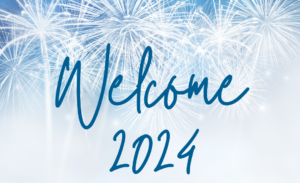In all of your communications, you want to come across polished, in control and confident.
The flow, content and visuals of your message matter.
But how you manage questions and answers also matters. A lot.
All the gains you’ve made from your smooth effortless presentation go straight down the toilet if you can’t manage questions and answers properly.
Avoid These Common Q&A Pitfalls
- You didn’t prepare.
You can and should prepare for Q and A, as much as you prepare for the other parts of your presentation. Ask yourself who will be sitting in the room, what they know about your topic and the questions most likely to arise. I bet you can anticipate 75% of what your audience will ask. Then practice stating your answer out loud.
- You didn’t repeat the question.
Whether you’re answering to a small group of people or a large auditorium, always repeat the question for these three reasons:
a) Paraphrasing, repeating or clarifying the question back to the questioner ensures you heard it correctly and answer the question they asked.
b) It ensures that the rest of the audience hears the question.
c) You gain a little extra time to think of an answer.
- You only responded to the person who asked the question.
As you articulate your answer, take your eyes off the questioner, and give eye contact to the entire room. Otherwise you look like you’re in a 1:1 conversation with the questioner, which is a subtle way of excluding the rest of the audience. Your eye contact is an important tool to keep everyone engaged, so use those eyes.
- Your answer is way too long.
Be brief. State your answer by tying back to the key message of your presentation. Give an example and move on. Your audience will appreciate a concise answer and at the same time you will sound credible and in control.
- You allowed the questioner to go on too long.
Often someone has a question but can’t quite spit it out. Or they don’t really have a question, it’s more of a long-winded comment. Or someone wants the chance to show their expertise and talk about his/her experience.
Don’t let your audience hijack the Q&A. It’s your job as the presenter to politely interrupt, attempt to paraphrase what they’re saying into a question, provide an answer and move on. Your audience will secretly thank you for it.
- You keep judging the questions.
When you remark, “Great question!” or “Excellent question!” you may think you sound encouraging and positive, but stating this after every question comes across as insincere. Yet saying “good question” after some questions and not others may leave audience members who don’t receive a pat on the head wondering “Hey, isn’t my question a good question too?”.
I recommend saying nothing after each question. Instead, after the question and answer period, you can show your appreciation with a broad, “Thank you, everyone, for your great questions.”
- You faked an answer.
Often we don’t know the answer to a question. That is perfectly ok. If you’re not sure, don’t fake it. The audience sees right through you. Tell your audience you don’t know, that you don’t want to give false information, but here’s what you do know …
If you are able to find an answer and follow-up with the questioner, do so. But don’t say “Let me get back to you on that” if you have no intention of ever following up.
- You ended the presentation with a question and answer.
Boring. Don’t let the Q&A be the last thing people hear or remember.
Watch the clock, warn the audience (i.e. “I’m mindful of the time. Let’s take 2 more questions”) and leave a few minutes after the Q&A to summarize, tie back to your main message and end with a bang. Make sure YOU have the last memorable word.
If you notice many more people still have questions, tell your audience to find and ask you questions after the presentation or meeting.
As if getting up in front of people and presenting isn’t nerve-racking enough, gracefully handling questions from your audience tests the most confident presenters.
With a little preparation and practice, your Q&A will be just as smooth and solid as the rest of your presentation.
Marta Steele is a Partner at PeopleResults. Connect with her on Twitter @MartaSteele.



